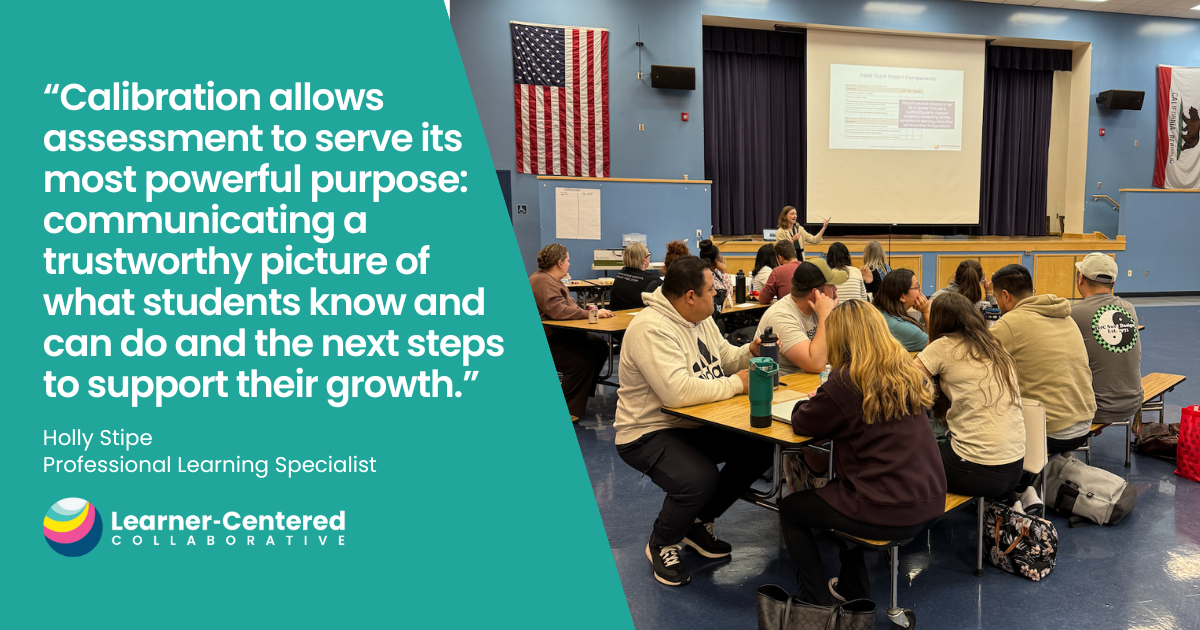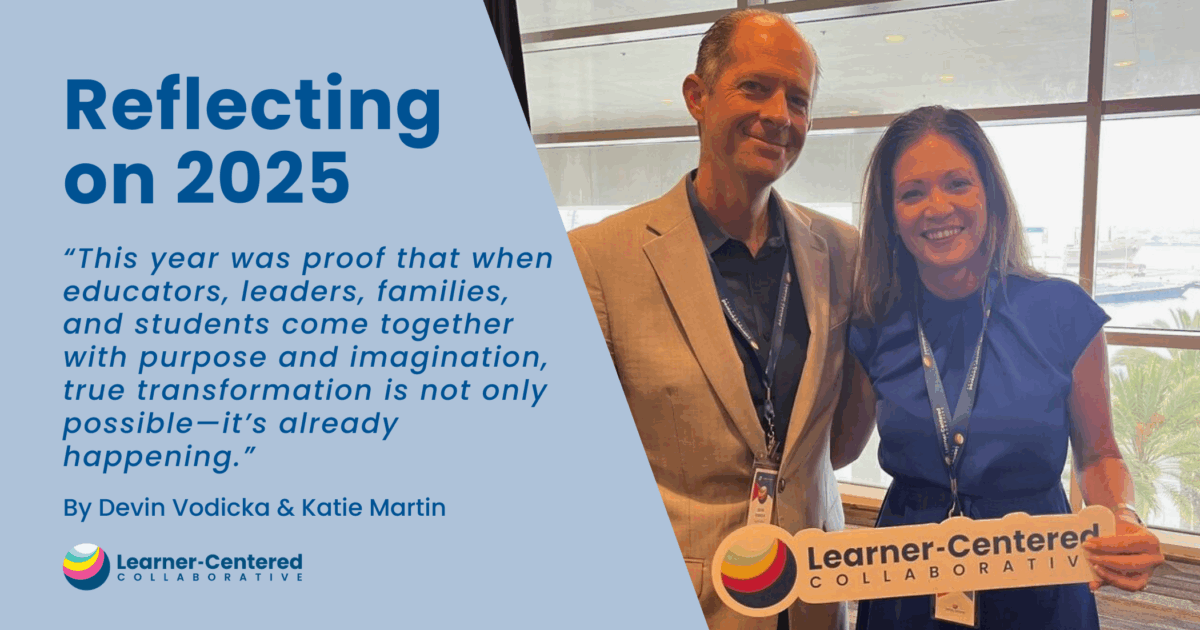Not All Rubrics Are Created Equal: How Competency-Based Progressions Are The Way to Go
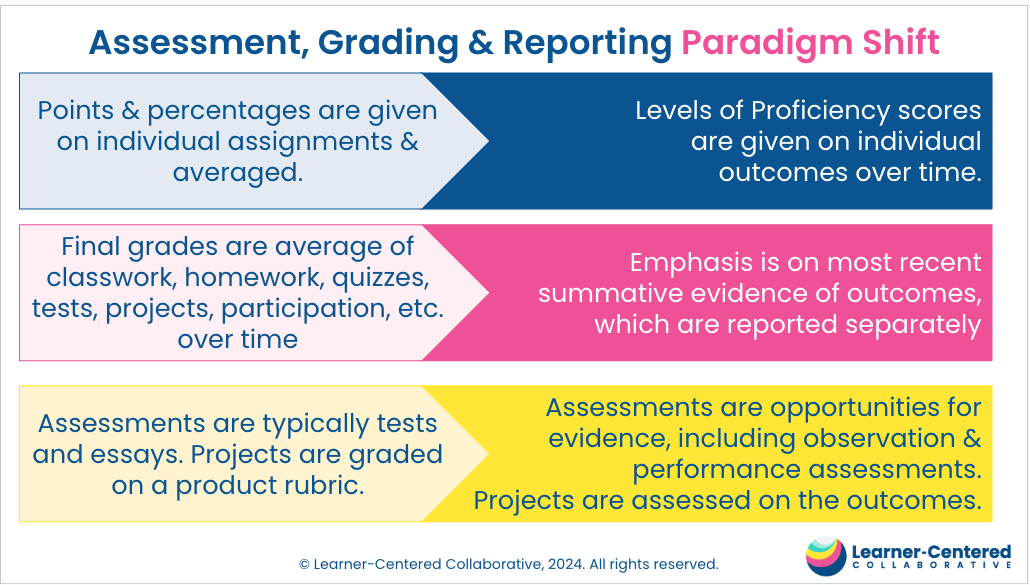
For decades, rubrics have been both championed and criticized. This blog explores two distinct types of rubrics: traditional product-based rubrics and the emerging competency-based rubrics. Traditional rubrics, as we typically conceptualize them, are product-based. They define success criteria for specific assignments, describing gradations of quality for meeting expectations. These rubrics are assignment-specific and outline particular tasks students need to complete. However, as educational systems shift towards competency-based assessment, a new type of rubric has emerged. Competency-based rubrics align directly with learning outcomes and demonstrate a learner’s progress along a continuum of skills over time.
Learn more about the paradigm shift to Competency-Based Assessment, Grading & Reporting and see concrete models in the Competency-Based Reporting Playbook.
The research supporting rubrics demonstrates their value as essential tools for aligning assessment practices among educators and students. Well-crafted rubrics offer clear success criteria and support self-assessment and peer feedback, all important elements of a learner-centered environment.
Despite these benefits, critics of rubrics have raised valid concerns, particularly regarding traditional product-based rubrics used in conventional grading systems. Some argue that rubrics can stifle creativity by defining exactly what teachers expect. Conversely, others worry that vaguely defined points can create inequities by leaving students unsure of how to achieve them. Additional criticisms include the subjectivity of rubrics, their rigidness when overly discrete, and the challenges of translating them to a grade.
Product-Based Rubrics
Product-based rubrics are the traditional tools most educators are familiar with. Product-based rubrics are task-specific tools designed to assess the quality of a tangible product of learning, such as an essay, project, or presentation. These rubrics can be holistic, analytical, or in the form of a checklist. They generally describe what good, average, and poor products look like, often using a four-level scale, but they can also take the form of a single point rubric.
Consider a rubric for an essay. It might include criteria for organization, mechanics, thesis statement, and conclusion. Each criterion could have descriptions for four levels of quality, differentiating levels with terms like “a little” vs. “many” or by the number of examples provided.
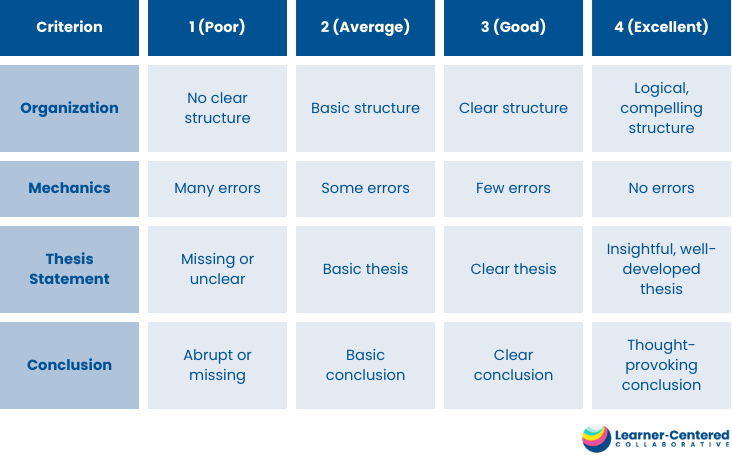
These rubrics often include points for each level, possibly weighing certain criteria as more points than others. Those points are added up and divided by the total possible points to give a percentage grade for the assignment. While individual teachers often develop product-based rubrics for specific assignments, teaching teams may sometimes create shared rubrics for use across multiple assignments. An example is a common essay rubric used by all English department teachers for every essay in a shared course.
Competency-Based Progressions
“The same rubric should be used across multiple performances, offering many chances to meet one clearly articulated set of expectations” – Lenz, Wells and Kingston, 2015
In contrast, competency-based rubrics define the developmental progression of a competency or skill over time. They describe a continuum of growth from early development towards mastery, acknowledging that true mastery is an ongoing journey. This approach makes it possible to move away from the century-old factory model of education, creating opportunities for schools to become places where young people are better prepared to thrive in their communities and use their strengths to create a positive impact.
Competency-based systems disrupt the “paradigm of coverage” that often plagues traditional education models. Instead of attempting to cover an unrealistic number of standards, this approach allows educators to focus on the most crucial skills and competencies, asking, “What are the most important things for students to learn? What do we value in our community?”

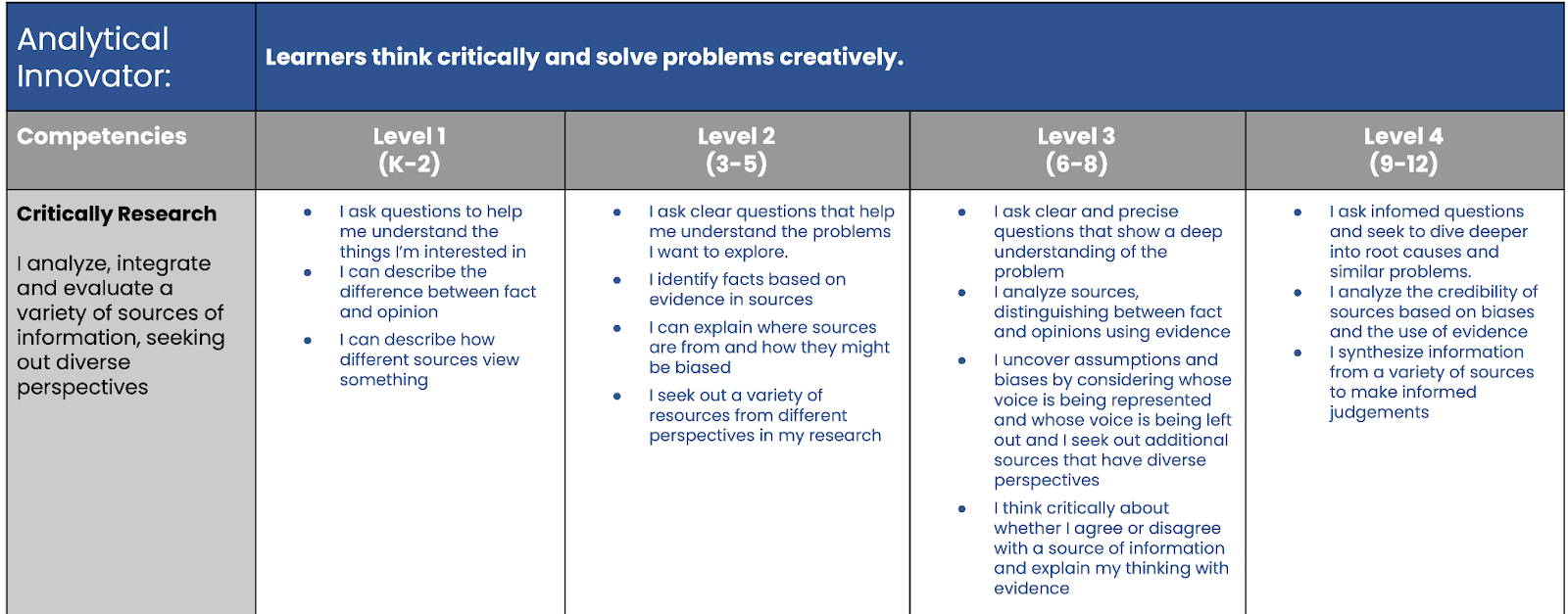
Ready to transform your assessment approach? At Learner-Centered Collaborative, we support schools and districts in defining their own competencies related to a Portrait of a Learner as part of our Framework for the Future process. Learn more about our approach to competency-based rubrics and how we can help you implement them in your educational setting.
Competency rubrics are assignment-agnostic and can be used across multiple opportunities for evidence, broadening the definition of assessment. They create a shared understanding of progress within a competency or skill, rather than combining points for an average on a single assignment. They are best developed in interdisciplinary, multi-grade level teams and used throughout the school by all educators to show a learner’s development and growth over time.
To return to the example of the essay rubric, in a competency-based environment the essay becomes the vehicle for learners to demonstrate various skills. Their essay may be assessed on competencies such as “I can make an argument or claim with supporting evidence,” as well as utilizing feedback, critical thinking, or synthesizing information from a variety of sources. The focus shifts from specific structural elements to the learner’s ability to support their claims with evidence.
For those familiar with proficiency scales in a standards-based context, they share similarities with competency-based progressions. Both align success criteria directly to outcomes and are assignment-agnostic, providing success criteria on the standard itself regardless of the assessment. However, a standards-based proficiency scale defines a progression on a single, grade-level-specific standard, while a competency-based rubric outlines developmental progression on broader skills over time, used across multiple grade levels and content areas. Read more about the distinction between standards and competencies here.
Why This Distinction Matters
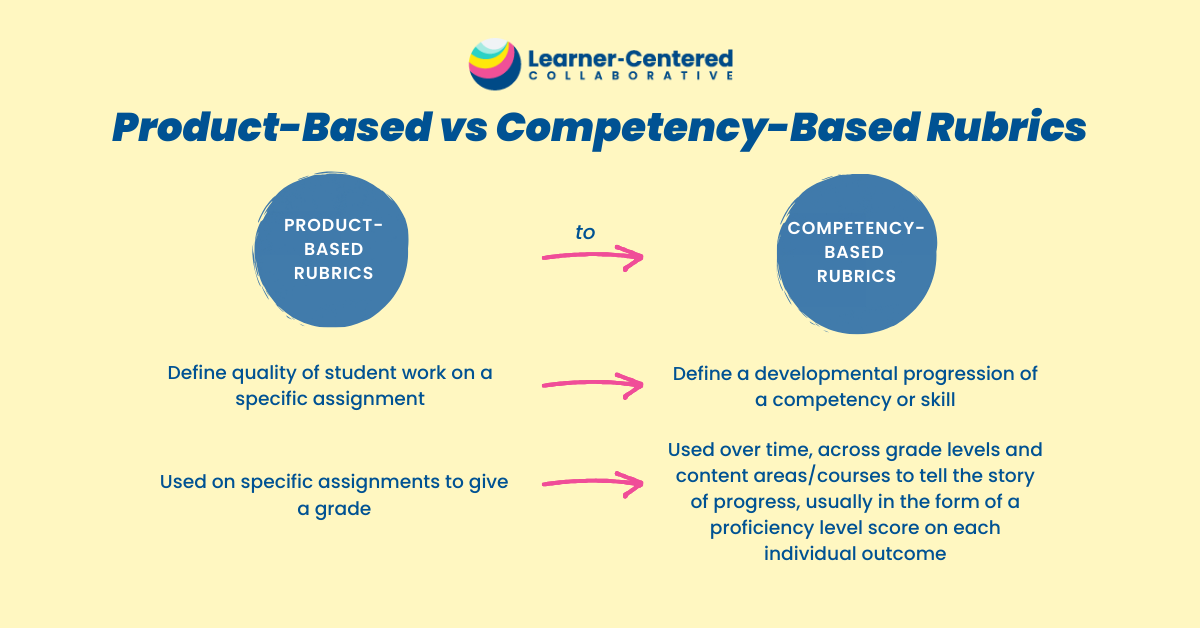
Understanding the distinction between product-based and competency-based rubrics is crucial for educators implementing competency-based assessment. In a competency-based learning environment, the focus of feedback and assessment is on the outcomes themselves– the standards, competencies, or skills that the community has decided are most critical for young people to demonstrate. Therefore, the competency-based rubric, aligned to the outcome and used across assignments or evidence opportunities, becomes the tool that anchors all of the work of learners and educators.
This shift does not eliminate the role of product-based rubrics entirely. Educators can create success criteria, preferably in a checklist or single-point rubric format, to define a successful product. These product-based rubrics serve as scaffolds, supporting learners in developing their work. However, the product itself is not the primary focus of assessment. Instead, whether the student has shown compelling evidence of the desired outcomes takes center stage. In cases where the product itself is central to the competency being assessed, such as a skill focused on creating beautiful art, the competency-based rubric would naturally emphasize the qualities of the product, blurring the line between product-based and competency-based assessment.
The product or the assignment is the vehicle for which learners will demonstrate the desired outcomes – the knowledge, skills and dispositions defined in the standards or competencies. Ultimately, it is these outcomes that are assessed using the competency-based rubric.
The Power of Competency-Based Rubrics in Learner-Centered Education
Competency-based rubrics are powerful tools for self-assessment, peer feedback and reflection. Especially because they are used over time and across content areas, learners can truly get to know the rubrics and understand their strengths and areas of growth in a variety of settings.
Unlike product-based rubrics, these rubrics emphasize the importance of growth and progression in competencies. They are a tool that can be used to provide feedback in formative assessments and track progress over time through summative evidence opportunities.
Most importantly, competency-based rubrics are integral to fostering a truly learner-centered environment. By providing clear, consistent criteria for skill development, they empower learners to own their educational journey through meaningful self-reflection, peer feedback, and goal-setting. This approach enables students to make informed decisions about their learning strategies and develop a growth mindset that extends beyond the classroom.
Ready to transform your assessment approach? Let’s explore competency-based rubrics together, connect with us today!



